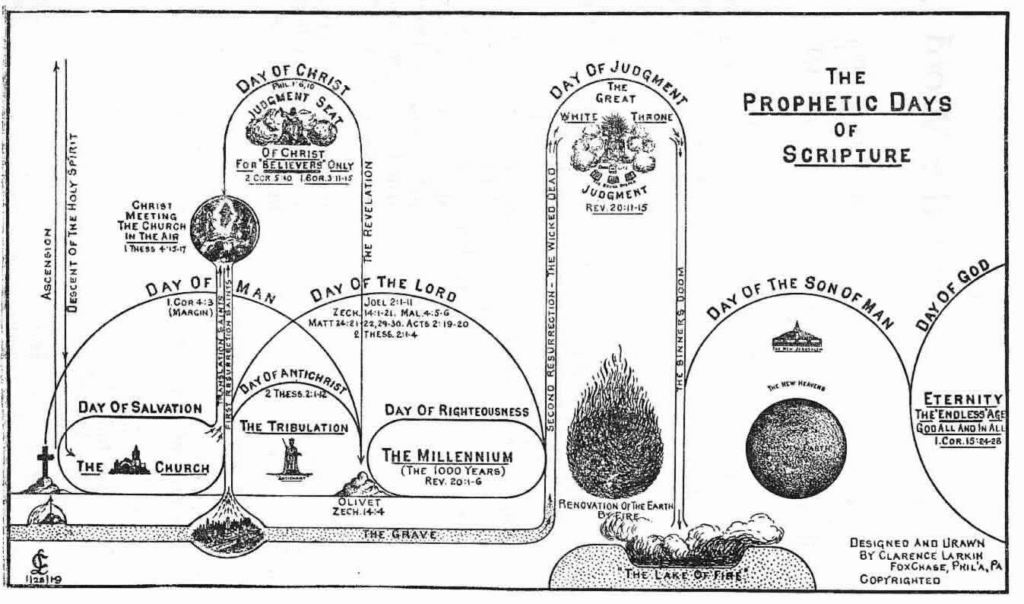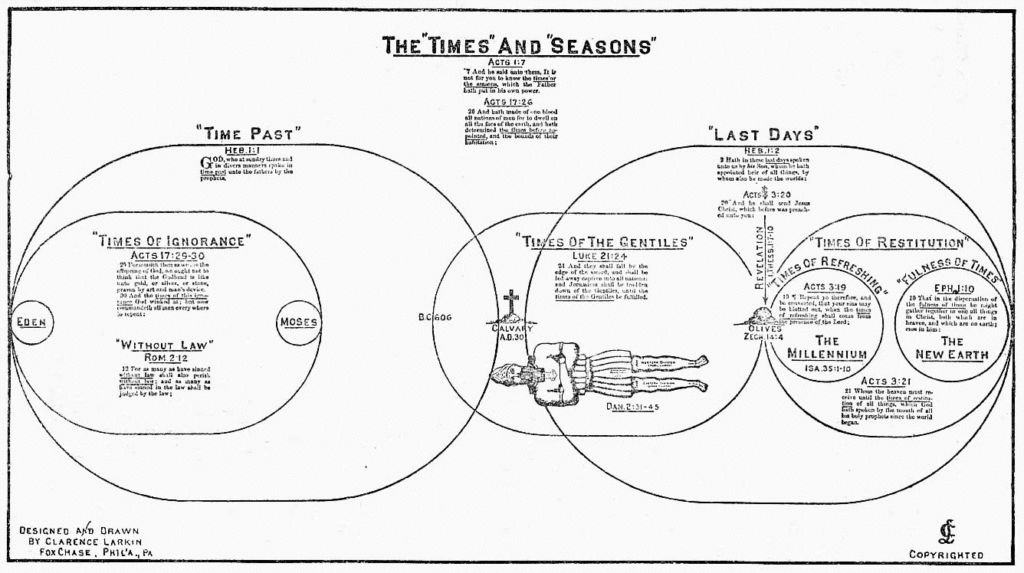Rightly Dividing the Word
“Study to shew thyself approved unto God, a workman that needeth not to be ashamed, rightly dividing the word of truth. – 2 Timothy 2:15
This is an introductory of the first chapter, with charts. Just a small portion of the full book “Rightly Dividing The Word”, 328 pages.
The Holy Scriptures are not a systematic treatise on Theology, History, Science or any other topic. They are a REVELATION from God of His Plan and Purpose in the Ages as to the earth and the human race. They were given to us piecemeal “at sundry times and in divers manners.” Heb. 1: 1. Holy men of God spake as they were moved by the Holy Spirit during a period of 1600 years, extending from B. C. 1492 to A. D. 100. The Bible consists of 66 separate books; 39 in the Old Testament, and 27 in the New. These books were written by about 40 different authors. By kings, such as David and Solomon; statesmen, as Daniel and Nehemiah; priests, as Ezra; men learned in the wisdom of Egypt as Moses; men learned in Jewish law, as Paul. By a herdsman, Amos; a tax-gatherer, Matthew; fishermen, as Peter, James and John, who were “unlearned and ignorant” men; a physician, Luke; and such mighty “seers” as Isaiah, Ezekiel and Zechariab.
Chart: THE PROPHETIC DAYS OF SCRIPTURE
It is not an Asiatic book though it was written in that part of the world. Its pages were penned in the Wilderness of Sinai, the cliffs of Arabia, the hills and towns of Palestine, the courts of the Temple, the schools of the prophets at Bethel and Jericho, in the palace of Shushan in Persia, on the banks of the river Chebar in Babylonia, in the dungeons of Rome, and on the lonely Isle of Patmos in the Aegean Sea.
While the Bible has been compiled in the manner described, it is not a “heterogeneous jumble” of ancient history, myths, legends, religious speculations and apocalyptic literature. There is a progress of revelation and doctrine in it. The judges knew more than the Patriarchs, the Prophets than the judges, the Apostles than the Prophets. The Old and New Testaments cannot be separated. You cannot understand Leviticus without Hebrews, or Daniel without Revelation.
While the Bible is a “Revelation from GOD” it is not written in a superhuman or celestial language. If it were we could not understand it. Its supernatural origin is seen in the fact that it can be translated into any language. The language of the Scriptures is of three kinds: Figurative, Symbolical and Literal. The Figurative is explained by the context, the Symbolical either in the context or somewhere else in the Scriptures, and the rest should be taken literally. That is, we are to read the Bible as we would read any other book, letting it say what it wants to say, without allegorizing or spiritualizing its meaning.
While the Bible was written FOR all classes of people, and FOR our learning, it is not addressed to all people in general. Part of it is addressed to the JEWS, part to the GENTILES, and part to the CHURCH. These three constitute the “Three Classes” into which humanity is divided. 1 Cor. 10: 32. It follows therefore that while the whole Bible was written for the instruction of the Church, it is not all written about the Church. The Church is not mentioned in the Old Testament. The Old Testament is mostly taken up with the history of one nation, that of Israel. When we take the Old Testament promises and apply them to the Church we rob the Jew of that which is exclusively his. For illustration, the prophecy of Isaiah in the chapter headings is largely applied to the Church, whereas the very first verse declares that it is- “concerning JUDAH and JERUSALEM.” Isa. 1: 1. In the New Testament the Epistles of Hebrews and James are Jewish. The Epistle of James is addressed, not to the Church, but to the “TWELVE TRIBES scattered abroad.” James 1: 1. In the Epistle to the Hebrews many Christians stumble at the words, “sin willfully,” “fall away” (Heb. 6:4-6), and “if we sin willfully,” Heb. 10:26. But these words do not apply to Christians. They were spoken to apostate Jewish professors of Christianity who had never been born again, and who, if they did not accept Jesus as their Messiah, practically crucified Him again, and were as bad as their brethren who did crucify Him. ALL Scripture is profitable for doctrine, for reproof, for correction, for instruction, (2 Tim. 3: 16), and what happened to Israel was written for our ENSAMPLE and ADMONITION, (1 Cor. 10: 11), but we must not apply to the Church what does not belong to it. To do so is to misapply Scripture and lead to confusion.
Chart: THE “TIMES” AND “SEASONS”
In “Rightly Dividing” the Word we must also distinguish between the work or offices of Christ as Prophet, Priest and King. A careful study of the Chart, “The Threefold Work of Christ,” page 250, will show that these offices are not held at the same time. We must also distinguish between the “Prophetic Days” of Scripture. See the Chart on “The Prophetic Days of Scripture,” (see above). We must also distinguish between the “Times” and “Seasons.” Between the “TIMES PAST” when He spoke by the Prophets, and these “LAST DAYS” in which He has spoken to us by His Son. Heb. 1: 1-2, As to the “TIMES” we have them designated as the “TIMES OF IGNORANCE,” (Acts 17:30); the “TIMES OF THE GENTILES,” (Luke 21: 24); the “TIMES OF REFRESHING,” (Acts 3:19); the “TIMES OF RESTITUTION,” (Acts 3:21); and the “Dispensation of the FULLNESS OF TIMES.” Eph. 1: 10. See the Chart of “The Times and Seasons,” page 4. From the statement the “TIMES OF THE GENTILES,” we see that when the “Gentiles” are in power, the “Jews” are not. And as the “Times of the Gentiles” is still running, the Church cannot be in this Dispensation a governing or Kingdom power. We must also not forget the “DIVINE CONJUNCTIONS” and the “DIVINE DISJUNCTIONS” of the Word of God. We must not separate what God has joined, as the “Word of God” and the “Spirit of God,” nor join what He has separated as Baptism and Regeneration, Law and Grace, the Church and the Kingdom.
But it is not enough to classify the Scriptures in the manner already mentioned, we must learn to separate the Scriptures as to “TIME” and “ETERNITY,” and the different “AGES” and “DISPENSATIONS” of “Time.”


